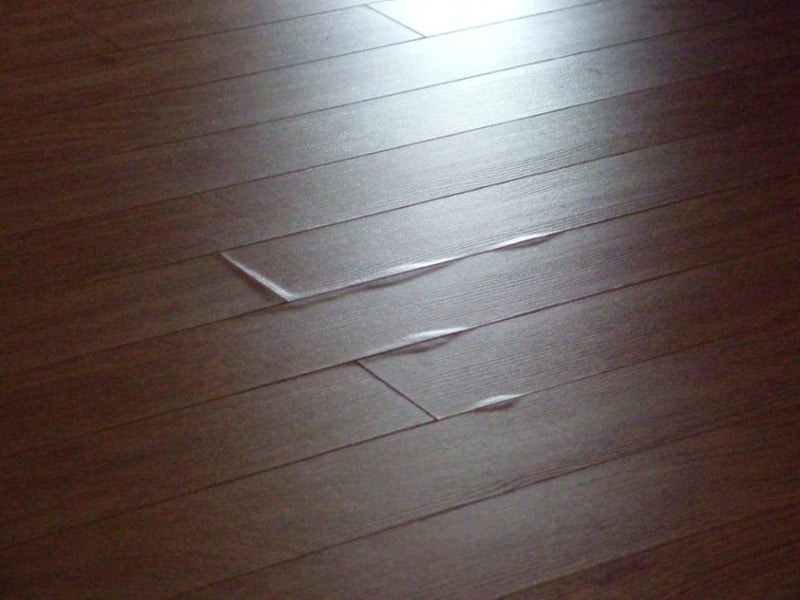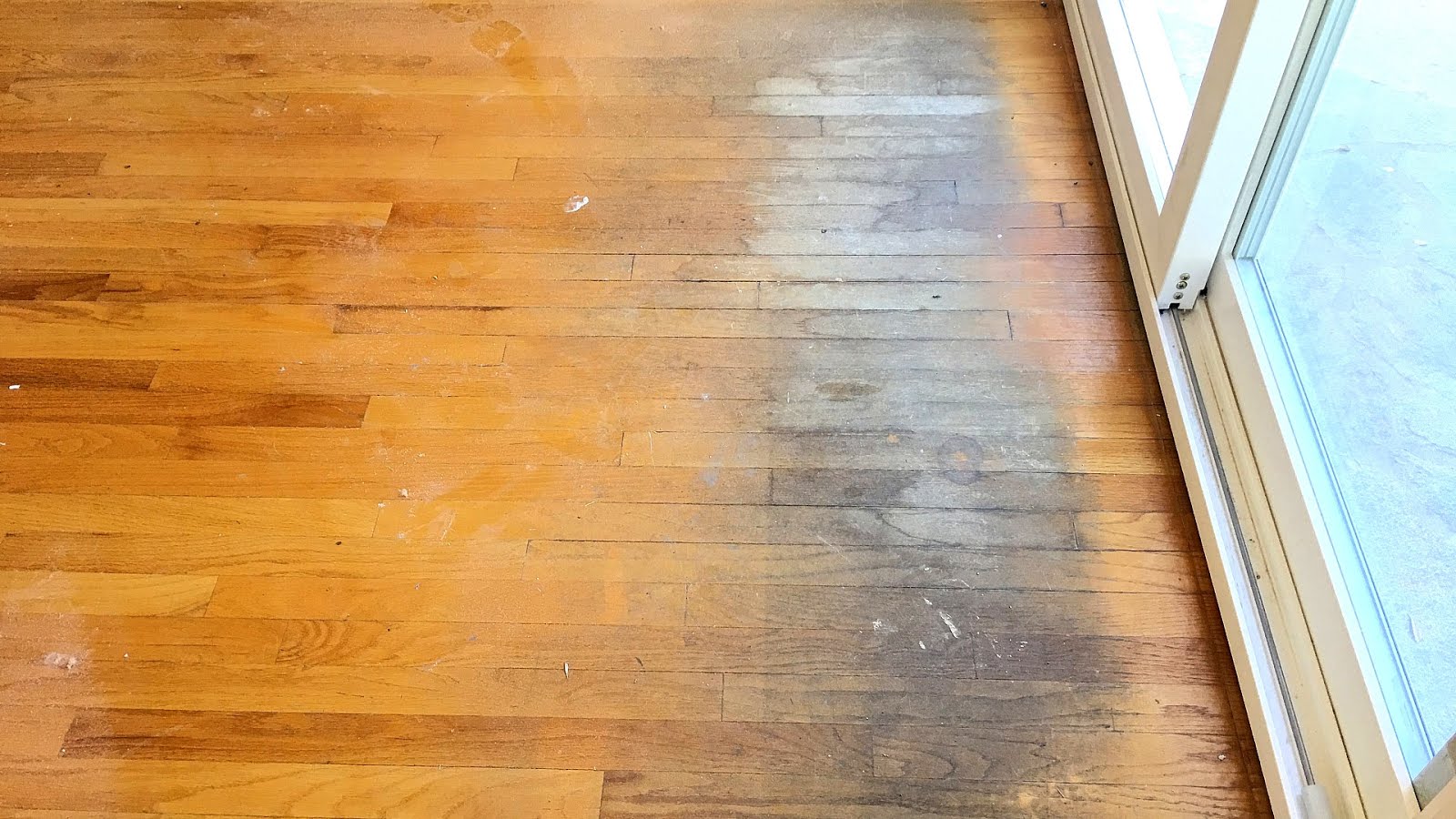Have you ever walked into your home and found a puddle of water spreading across your beautiful laminate floor? The sight can be enough to send chills down your spine, especially if you know that laminate flooring is known for its water sensitivity. But before you resign yourself to replacing the entire floor, there’s good news: sometimes, water damage on laminate can be fixed.

Image: mromavolley.com
This article will guide you through the process of assessing damage, understanding the severity of the situation, and exploring potential repair options. From understanding the different types of water damage to identifying the most effective repair solutions, we’ll leave you equipped to handle the situation with confidence. Whether it’s a minor spill or a more significant flood, we’ll guide you through the steps to restore your laminate flooring to its former glory.
Understanding the Different Types of Water Damage
Water damage is not a one-size-fits-all scenario. The type of water damage your laminate flooring experiences plays a crucial role in determining the potential for repair. Here are the three main categories:
Category 1: Clean Water Damage
This category refers to water that is considered clean and safe, such as rainwater or a burst water line that has not come into contact with sewage or contaminated materials. Clean water is the least destructive type of water damage, and laminate flooring can often be salvaged with prompt action.
Category 2: Grey Water Damage
Grey water is considered less clean than clean water. It can be from sources like washing machines, dishwashers, or even damp basements. This type of water may contain detergents, food particles, or other contaminants. While still manageable, grey water damage can lead to mold and mildew growth if not addressed quickly.

Image: thedamagechoices.blogspot.com
Category 3: Black Water Damage
Black water is the most dangerous type of water damage, originating from sewage, flooding, or other sources contaminated with bacteria. It is highly contaminated and poses significant health risks. This type of damage requires immediate professional attention, as it can lead to severe mold growth and requires extensive cleanup.
Assessing the Severity of the Damage
Once you’ve identified the type of water damage, the next step is to assess the severity. This involves examining the extent and depth of the damage. Here are some key indicators to look for:
1. Visual Inspection
Start by looking for visible signs of water damage, such as warping, swelling, or buckling of the laminate planks. Pay close attention to the edges and seams of the planks, as these are often the first areas to show signs of water damage.
2. Touch Test
Gently touch the affected area. If the laminate feels spongy or soft, it’s likely that the core of the plank has been compromised by water.
3. Moisture Meter
For a more precise assessment, consider using a moisture meter. This tool can measure the moisture content of the affected area, giving you a better understanding of the extent of the damage.
Can You Fix Water Damage on Laminate Flooring?
The answer to the question of whether you can fix water damage on laminate flooring depends largely on the severity of the damage and the type of water involved.
Minor Water Damage
For minor water damage, such as a small spill or a leaky faucet that created a small puddle, the chances of successful repair are high. Prompt action is key.
Severe Water Damage
If the damage is extensive, involving large areas of the floor or deep penetration of water, replacement might be the more practical solution. This is especially true for Category 3 black water damage, which requires professional cleanup and remediation.
Repairing Water Damaged Laminate Flooring
If the damage is minor and you’ve determined that the planks haven’t been compromised to the core, you can try repairing them. Here are some common repair techniques:
1. Drying the Flooring
The first step is to dry the affected area as quickly as possible. This can be done using fans, dehumidifiers, or even simply airing out the room. The faster you can dry the flooring, the less likely it is to warp, buckle, or develop mold.
2. Removing Affected Planks
In some cases, individual planks may need to be removed and replaced. This is especially important for planks that have warped or buckled, as they can create unevenness in the floor and make it susceptible to further damage.
3. Repairing Damaged Areas
If only a small area of the laminate is damaged, you may be able to patch it up. This typically involves using epoxy or wood filler to fill in the damaged area and sanding it smooth.
4. Refinishing the Laminate
After any repairs or replacements are complete, you might need to refinish the laminate. This involves sanding the floor and applying a new sealant to restore its original sheen.
Preventing Water Damage on Laminate Flooring
While there’s always a chance of accidents happening, you can proactively reduce the risk of water damage to your laminate flooring by implementing preventative measures:
1. Installing Waterproof Mats
Placing waterproof mats in high-traffic areas, particularly near entryways, can prevent dirt, water, and debris from being tracked onto your laminate floor.
2. Regularly Inspecting Faucets
Conduct periodic checks of faucets and plumbing fixtures to ensure there are no leaks. This might involve tightening loose connections or replacing worn-out washers to prevent drips.
3. Addressing Leaks Promptly
If you spot a leak, don’t delay in addressing it. The longer the leak persists, the greater the potential for damage to your laminate flooring.
4. Using Protective Furniture Pads
Placing felt or rubber pads beneath furniture legs can help prevent scratches and dents, but importantly, it can also prevent moisture from seeping beneath the furniture and damaging the laminate.
Can You Fix Water Damage On Laminate Floor
Conclusion
Dealing with water damage on laminate flooring can be stressful, but with a clear understanding of the different types of damage, proper assessment techniques, and appropriate repair methods, you can make informed decisions about restoring your floor. Remember, quick action is key in mitigating the severity of water damage and preventing further complications. By addressing leaks promptly, utilizing preventative measures, and seeking professional assistance when necessary, you can keep your laminate floor looking its best for years to come.

:max_bytes(150000):strip_icc()/OrangeGloEverydayHardwoodFloorCleaner22oz-5a95a4dd04d1cf0037cbd59c.jpeg?w=740&resize=740,414&ssl=1)




